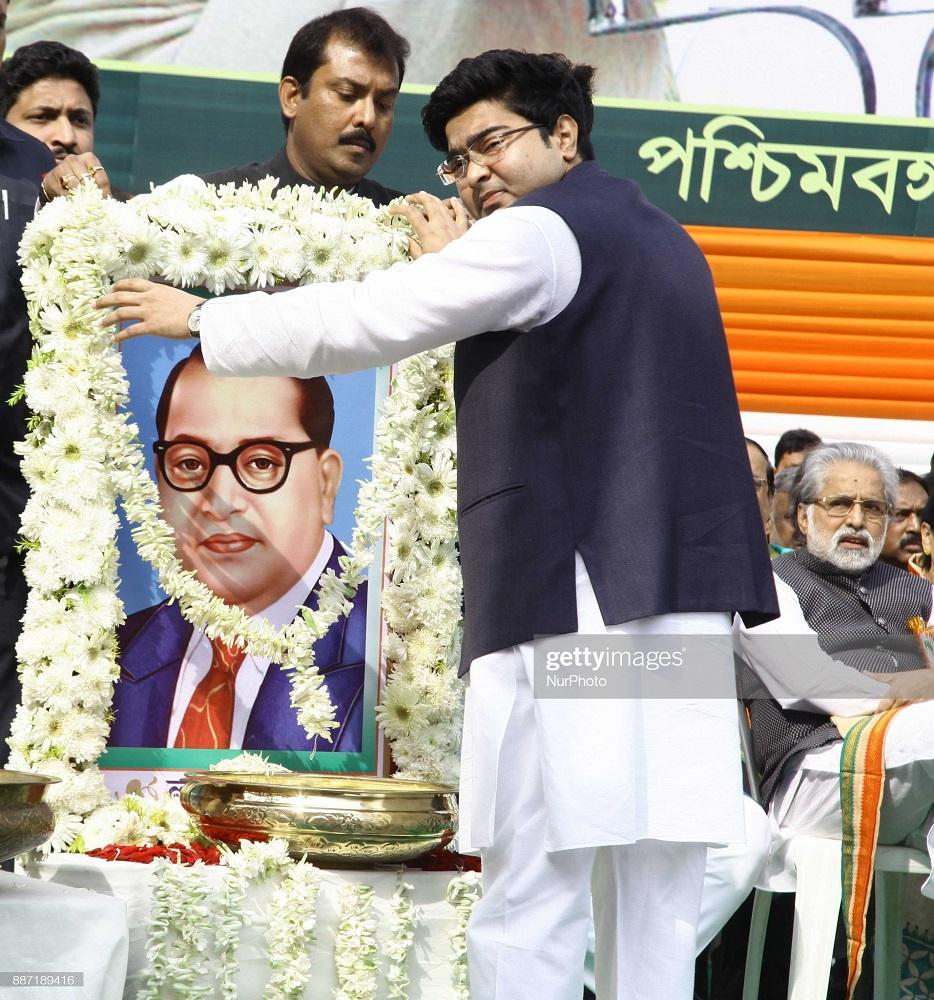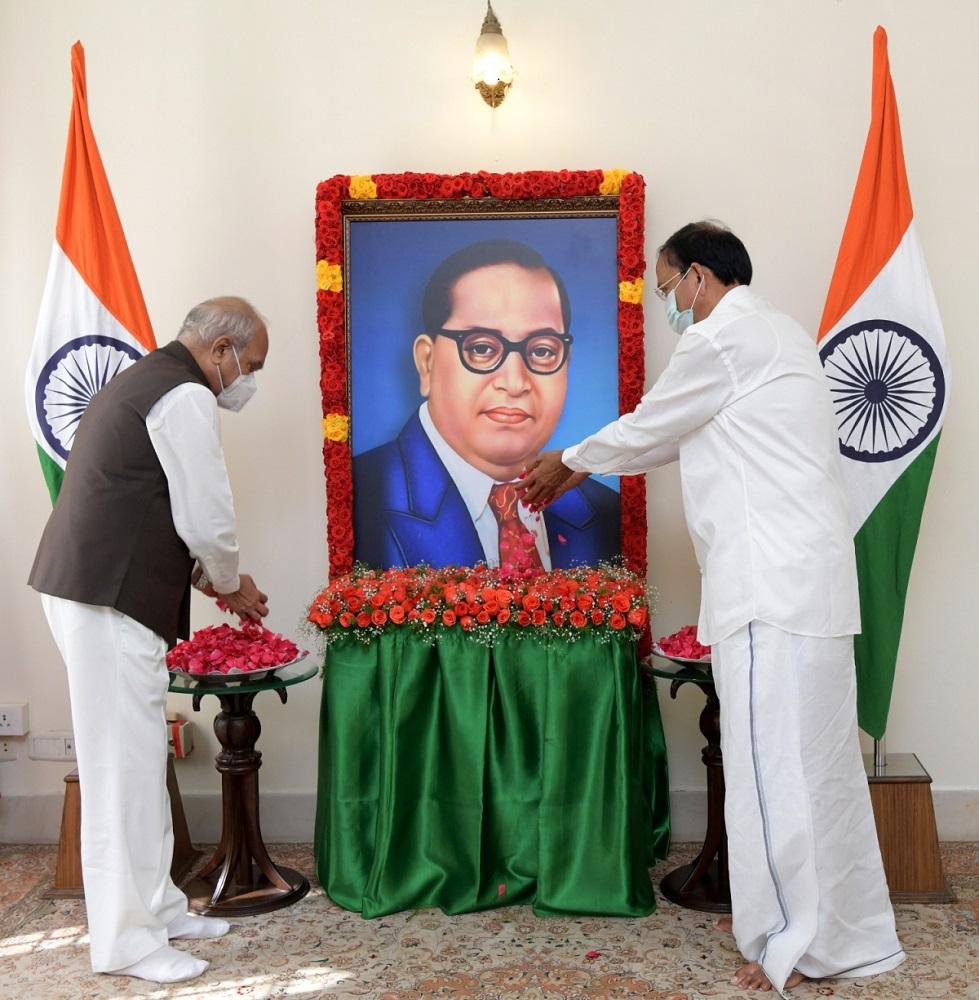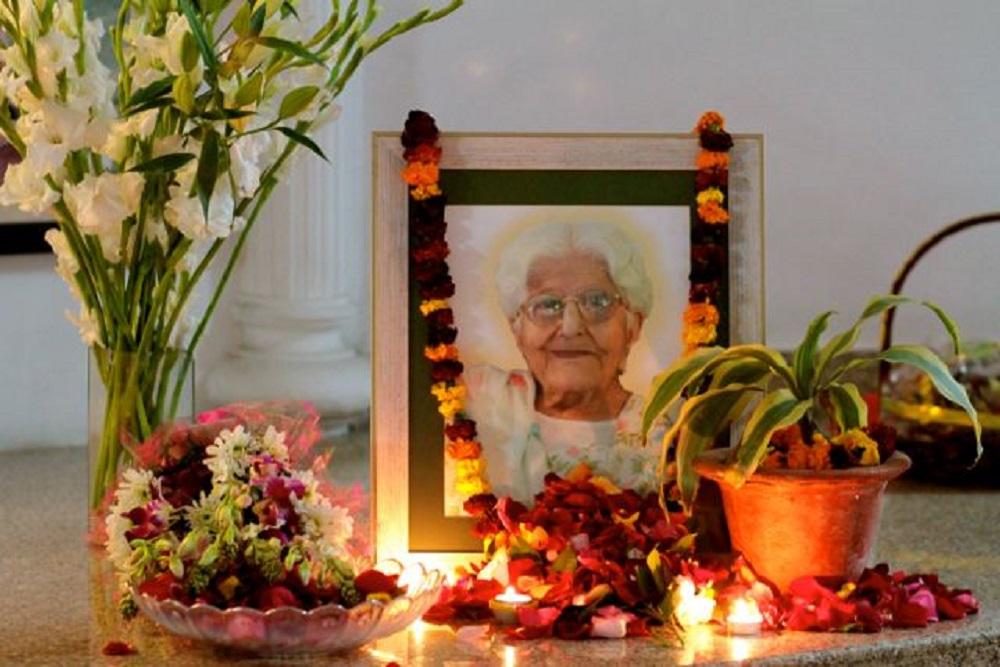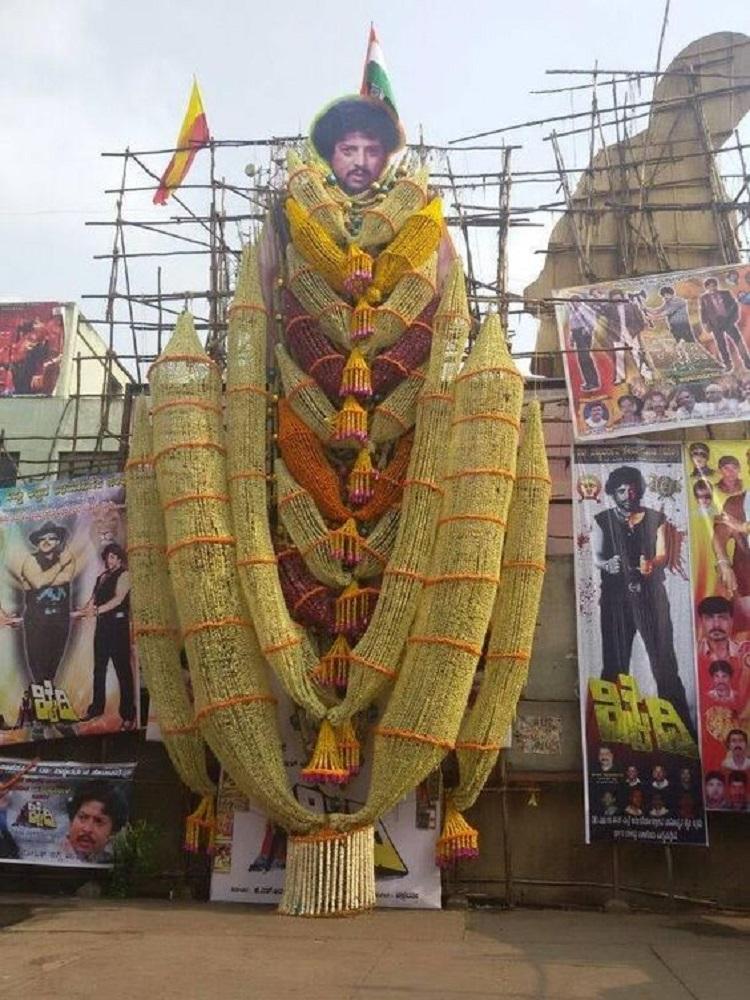On the Veneration of Photographs

“During any sacred ceremony, the photographs of ancestors are garlanded and incense is lit before them,” writes Siddharth Ghosh. Contemporary power-brokers are well aware of the substance of Ghosh’s insight. One sees such displays frequently during political events, where leaders seek to associate themselves with the image and popularity of other leaders (from the past) to craft their own fledgling political identity. This photograph was taken during the “National Solidarity Day” in West Bengal. (Debajyoti Chakravarty. Kolkata, 6 December 2017. Source: Getty Images.)
This is part of a series of posts where we try to engage with historical and theoretical voices formed within contexts of vernacularism, regionalism and bhasha. In these movements, language asserted its own right to be a many-tongued archive of contentious dialects and resistances against “standardisation,” whether imposed linguistically by central, state or regional movements in politics. This does not imply any neat rejection of nationalist or pan-subcontinental impulses nor does it reflect a turn away from internationalist modes of knowledge-making. These are texts that have never been translated into English before.
A historian of technology and science, Siddhartha Ghosh (1948–2002) conducted insightful research on the technologies of image-making and self-transformation in colonial and postcolonial Bengal. He was also a many-faceted essayist and fiction writer dealing with subjects as varied as music and sports, apart from science fiction and Bengali literary cultures. Following is an excerpt from his book Chhobi Tola: Bangalir Photography Charcha (Taking Photographs: A History of Bengali Photographic Practices).
The photograph is a live object in a Bengali household. During any sacred ceremony, the photographs of ancestors are garlanded and incense is lit before them. When Holi arrives, we revere our dead by applying vermilion to the feet of their images. A fortunate woman who has departed this life, leaving her husband and children, will have her photograph enlivened too: with sindoor applied to the parting of her hair and sandalwood paste on her forehead. Without a photograph, an essential organ seems to be missing in remembrance ceremonies for the dead.

A similar scene plays out in Tamil Nadu too. The vice-president of the country and the state’s governor offer their official respects to a portrait of B.R. Ambedkar. (ANI. Chennai, 6 December 2020. Source: Yahoo! News.)
It did not take long for the photograph to establish its place within the folk and religious habits of Bengalis. While the arrival of the railways and the telegraph prompted some doubts among us, there was no attempt to reject photography as a western imposition. By photographic practices we usually mean to focus on “taking” a photograph, as it is understood today. But there was a time when it only meant an attempt to draw an image (or portrait). Chandicharan Bandopadhyay has written in his biography of Vidyasagar, “After bringing his parents to Calcutta, (Vidyasagar) told his mother: ‘Ma! I have heard that a good poto (Hudson) has arrived at the house of the kings of Paikpara. I want to get him to take a picture of you.’”
In Subal Chandra Mitra’s biography of Vidyasagar, he mentions a "Mr Hudson," who was a “European portrait-painter, (and) had been engaged in painting the portraits of the members of the Paikpara Raj family." It points toward an ambiguous status of the word "photo" in contemporary parlance—which could suggest a likeness to be the salient factor of the image, whether painted or photographed (or both).

Personal photographs also receive the same kind of veneration from family members and relatives. Here, a writer (Jo Chopra) has given a prime position in her life to this image of her mother-in-law. (Source: Latika Roy Foundation, Jo’s Blog. “You’ve Got to Walk It by Yourself.”)
Photography’s arrival did spell doom for the portrait painters of the time and this should give us some grief, no doubt. But it must also be remembered that those who could not imagine, at the time, that painters could be reduced to penury one day, those middle classes now had the opportunity to get themselves photographed.

Often taken to deliberately “record-breaking” extremes, garlanded images of film stars are another common sight in India. Their veneration assumes a public performance of authority whereby the garland-makers assert their claim on their heroes. This poster of a Vishnuvardhan starrer, Khaidi (Prisoner. 1984)—a Kannada film from the popular “Sandalwood” film industry—demonstrates how far such claims can be taken. One of the photographers of this image, Janardhan Rao Salanke, sent off his snapshot to the Limca Book of Records, hoping to usurp the category of the most-garlanded public image. (Bengaluru, 2014. Source: Pintrest)




